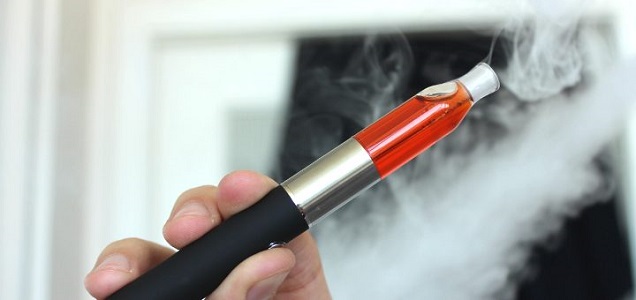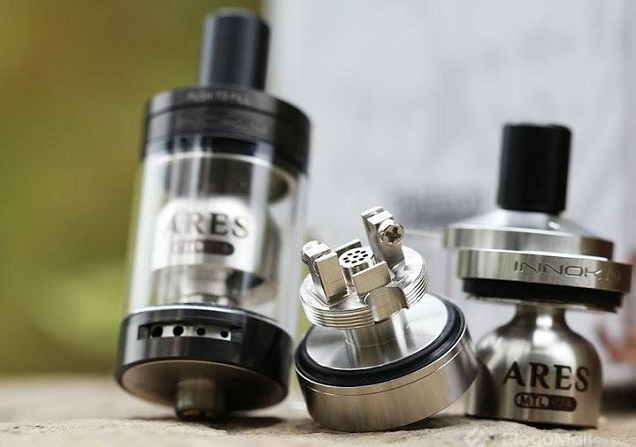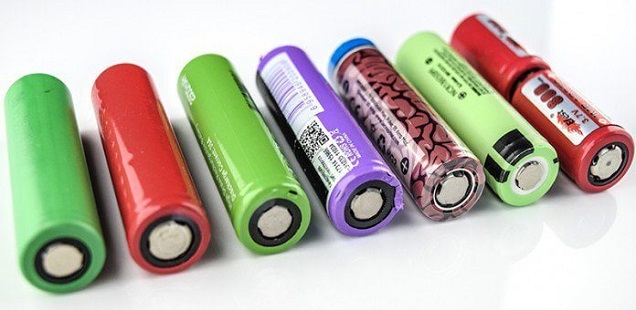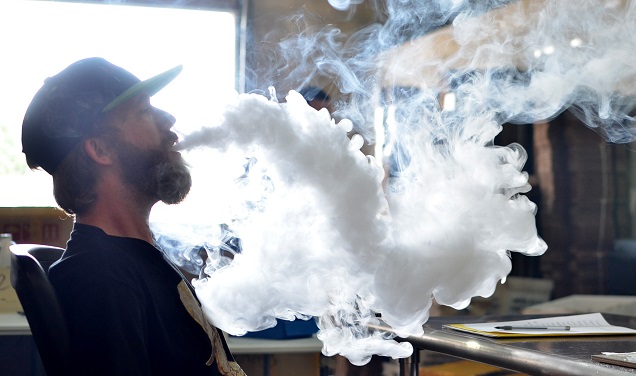
Sub ohm vaping has really taken over the vaping landscape in recent years. From the early days where building sub ohm coils was the pastime of hobbyist vapers toting mechanical mods and seemingly in an arms race to build the very lowest-resistance coils possible, it has been thoroughly commercialized. Now, chances are if you pick up a new vaping kit – even one marketed to beginners – you’ll have a sub ohm setup, or at least one capable of it. But what does sub ohm vaping even mean? What do you need to know to sub ohm safely? Are there specific e-juices, tanks and mods that are better for sub ohm vaping?
This posts answers these questions and more.
What is Sub Ohm Vaping?

Sub ohm vaping is simply vaping using a coil with a resistance of less than one “ohm.” An “ohm” is the unit of electrical resistance, which tells you how much a circuit resists the flow of current. So if you have a 1 ohm coil and a 0.5 ohm coil in two circuits, and the same voltage sent down each one, the 1 ohm coil would resist the flow of electricity twice as much as the 0.5 ohm coil. For the same voltage, twice as much current flows when you halve the resistance.
This goes a long way to explaining why sub ohm vaping is something many vapers choose to do. A resistance of less than one ohm will allow more electricity to flow to your coil, which means it generates more heat and vaporizes more of your e-juice. If you’re looking for big clouds or even vibrant, well-defined flavor, vaporizing more e-juice really helps.
The topic gets a bit more complicated than this, but the basic definition still stands: vaping using a coil (or multiple coils) with less than 1 ohm of resistance in total is sub ohm vaping. Sub ohm tanks often feature coils with 0.5 ohms of resistance or less, and you can build your own coils to any resistance you like.
Mods and Batteries for Sub Ohm Vaping
Most modern e-cigarettes and mods support sub ohm vaping, but it’s important to check before you vape. We’ll address safety concerns in detail later in the post, but for now all you need to know is that only certain batteries have the capability to support sub ohm vaping, because it takes more current and more power.
Basic Vape Pens and Cigalikes

Essentially no cigalikes on the market support sub ohm vaping, and the vast majority of simple vape pens don’t either. In both cases, you can understand this through the size of the battery: these devices have smaller batteries that can’t provide the power you need. For vape pens, you can check with the store you purchased it from or the manufacturer to find the minimum resistance supported, but you probably won’t be able to vape sub ohm with a simple eGo-style pen.
Bigger Vape Pens and All-In-One Systems
Not all vape pens are created equal, though. Chunkier vape pens like the Smok Stick One and the Kanger Subvod have more in common with early mods than slender vape pens, and many of these support resistances well below 1 ohm. For all-in-one style devices (like the eGo AIO from Joyetech), the same rules apply: in many cases they will support sub ohm vaping, and they will usually specify on the product page.
Box Mods and Other Styles
Pretty much any mod you buy these days will be capable of powering sub ohm vaping. If you’re serious about sub ohm vaping, getting a good mod is the best approach. Many mods have in-built batteries, and the minimum supported resistance will always be indicated on the product page.
Replaceable Vaping Batteries
For mods that don’t have in-built batteries, you need to buy your own batteries separately to use with them. We have a detailed list of the batteries that are suitable for sub ohm and high-power vaping, but the basic rule is to look for batteries with a high “amp limit,” or “maximum continuous current” rating. If you use a battery with a 20 A maximum continuous current rating or higher, it will support sub ohm vaping in all but the most extreme situations.
Tanks and Atomizers for Sub Ohm Vaping
Tanks and atomizers are really what define sub ohm vaping, because the resistance of the coils they use is crucial. Much like with modern mods vs. older devices, the majority of tanks on sale today will support sub ohm vaping, and these are commonly called “sub ohm tanks.” Regardless, here is a quick run-down of what you can expect from each type of tank:
Basic Clearomizers

The clearomizers you get with many simple vape pens are the only commonly-used type of tank that don’t usually have compatible sub ohm coils. These are explicitly designed for new vapers, and keep things simple and low power so they can be used with simpler e-cigarettes.
Modern Tanks

Sub ohm tanks dominate the landscape these days, so if you buy a tank for vaping, chances are it will support sub ohm vaping. These are generally bigger than the simple clearomizers, and usually come with a choice of several different sub ohm coils. There are some modern tanks (usually ones designed for “mouth to lung” vaping) that don’t support sub ohm coils, but these are still fairly rare and the resistances of the available coils are always clearly indicated.
Rebuildable Atomizers and Tanks

Rebuildable atomizers and tanks (RDAs and RTAs) always support sub ohm vaping because they allow you to build your own coils. This means you can tailor the resistance to suit your preferences. As long as you use wire with a low AWG (“gauge”), below 28 or so, you will be able to build effective sub ohm coils.
Sub Ohm Vaping: Pros and Cons
Sub ohm vaping offers a lot of advantages, but it isn’t for everybody. Whether sub ohm vaping is right for you really depends on what you want out of your vaping experience, and in particular whether you value performance over affordability.
Pros
- Excellent vapor production.
- Generally improved flavor.
- Warmer vapor.
- More satisfying in terms of nicotine.
Cons
- Uses more e-liquid.
- Drains your battery quicker.
- More expensive hardware.
- Not suitable for mouth-to-lung vaping (which is often preferred by smokers just switching over).
Sub Ohm Vaping Safety

Sub ohm vaping involves more power than ordinary vaping, and some safety concerns come along with the territory. Don’t panic, though: sub ohm vaping is perfectly safe, but you just need to ensure you have the right equipment.
The key point to remember is that batteries can only safely provide so much current, and if you ask for more current from your battery, you could run into issues. Manufacturers list this as the “maximum continuous current” supported by the battery, but vapers often call it the “amp limit.” This information is widely available online, and there are lists you can check for your specific battery, but if all else fails, Googling “[your battery] maximum continuous current” usually gets you the information you need.
The safest approach is to use a battery designed for high-power vaping, and use an Ohm’s law calculator to find out how much current (in amps) you’ll draw using your current setup. The best tool for ensuring you’re vaping safely is Steam-Engine’s battery drain calculator, which you can use to enter all of the key information and be presented with a simple answer.
However, provided you use a regulated (variable voltage or variable wattage) mod, and especially if you use one with a built-in battery, you’re unlikely to run into any issues. These devices have in-built safety features to ensure nothing goes wrong. “Mechanical” mods don’t have these safety features, though, and they’re not generally recommended these days for this reason.
Getting the Best Sub Ohm Vape

So if you’re ready to start sub ohm vaping, what do you need to do to get the best performance? While opinions differ and everybody has their own idea of an “ideal” vaping experience, here is a brief set of things to consider to get a good sub ohm vape:
PG/VG Ratio
Generally speaking, sub ohm vaping produces more vapor than higher-resistance vaping. Higher-VG e-juice (60% VG or more) is ideal for this. Not only will it produce thicker, more impressive clouds, it imparts less of a throat hit than high-PG e-juice. This makes it the better choice for sub ohm vaping overall.
Nicotine Strength
When you produce more vapor you get more nicotine. For this reason, most vapers reduce the nicotine strength of their e-liquid when they switch to sub ohming. A nicotine strength of 6 mg/ml or less is ideal for many sub ohm vapers’ purposes, but if you’re just switching from smoking, something as high as 12 mg/ml may be suitable. However, at this level and especially higher, the throat hit from the nicotine may make vaping unpleasant.
Airflow and Heat Resistance
Sub ohm vaping works better with a wider airflow setting. If the airflow is choked off, the heat builds up without a supply of fresh air to cool it down. This can make it difficult to vape for very long. Most sub ohm tanks feature adjustable airflow for this reason. Getting a heat-resistant drip tip (made of Delrin, glass or basically anything other than metal) is a good idea for this reason too.
Inhaling Style for Sub Ohm Vaping
Direct-to-lung inhales are more common when you’re vaping sub ohm. The sheer volume of vapor you produce makes it difficult to perform a two-step, mouth to lung inhale (the way you inhale from a cigarette) without coughing. If you’re more comfortable with mouth-to-lung inhales, you can turn the airflow down on your device, but higher-resistance vaping might suit you more.
Power Settings for Sub Ohm Vaping
Your power setting has a big part to play in how much vapor your device produces. More power means more vapor, in general. But the range of settings that works well with sub ohm coils is quite wide, ranging from 25 W or so right up to 100 W or even higher for some setups. The best advice is to check the coil you’re using: most of these have a suggested wattage range indicated on them. Start low and work your way up gradually (in 5 W increments, say) until you reach a level you like.
The Importance of Priming Your Coils

“Priming” your coils means soaking the wick of new coils manually before you fill up and start vaping. This is especially important for sub ohm vaping because the higher power settings can really damage your wick if you vape when it’s dry. Before installing your coil, wet the exposed bits of wick with some e-liquid, so you can’t see any dry white cotton. After you install the coil, fill up the tank and leave it for 5 to 10 minutes before you start vaping. This is good advice for any vapers, but it’s especially important if you sub ohm. This will make sure you get the most life out of every coil.
If You Don’t Want to Sub Ohm…
Sub ohm vaping is very popular, but it isn’t for everybody. If, after reading this post, you’re happy with your current setup or have decided to stick to higher-resistance devices, you can still get an excellent vape. The industry is fairly settled in sub ohm territory, but there are still many devices that offer solid performance at higher resistances, and you’ll get the benefit of a more smoking-like draw, longer battery life and less juice consumed each day. Check out “mouth to lung” tanks and you’ll find loads of great options.
But if you do want to dive into the world of sub ohm vaping, you have all the information you need to enjoy every single puff.

